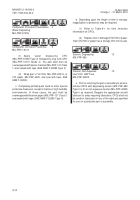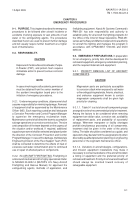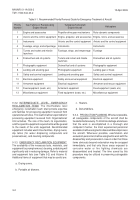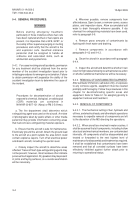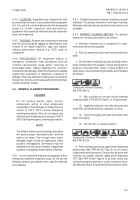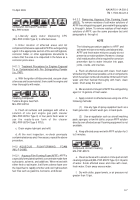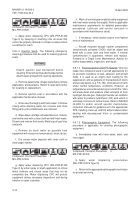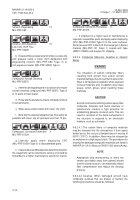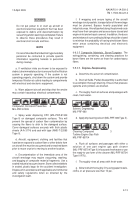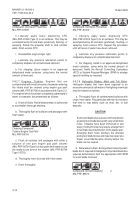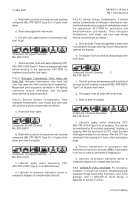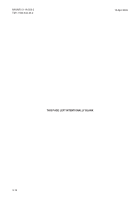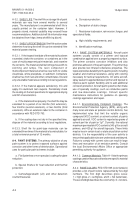TM-1-1500-344-23-2 - Page 163 of 240
9-9
NAVAIR 01-1A-509-2
TM 1-1500-344-23-2
15 April 2009
e. Enter location of affected areas and list
components that were exposed to fire extinguishing
agent in the appropriate section of the aircraft logbook,
corrosion folder, or other appropriate documents to
ensure that the area is re-inspected in the future as a
corrosion prone area.
9-6.4. PROTEIN FOAM AND SODA ACID.
9-6.4.1. Protein Foam. A general category of fire
extinguishing agents that use protein based foam
concentrate. When mixed with water, protein foam is
highly effective on fuel fires and provides excellent heat
resistance. Types of firefighting foams include AFFF,
AR-AFFF, Protein Foams, Fluoroprotein Foams, Class
A Foams, and Training Foams.
9-6.4.2. Soda Acid. Soda acid and other inverted foam
extinguishers are not approved portable fire fighting
equipment for use on or around aircraft because they
are very corrosive. Soda acid type extinguishers operate
by turning the extinguisher upside down. Acid spills out
of a glass jar and reacts with the soda contents.
9-6.4.3. Removing Protein Foam and Soda Acid. The
residues left from the use of these materials can be
extremely corrosive to aircraft and equipment. Remove
residues as follows:
a. Thoroughly flush the affected area with fresh
water. Ensure that the rinse water is completely flushed
from the aircraft or equipment.
Compound, Aircraft Cleaning
2
MIL-PRF-85570
b. Clean surfaces with a solution of one part aircraft
cleaning compound (MIL-PRF-85570 Type II) in 14 parts
of water. Scrub affected areas and rinse with clean,
fresh water. Drain away excess water.
c. Dry with cloths, paper towels, or air pressure not
greater than 10 psi.
Compound, Corrosion Preventive
4
MIL-PRF-81309
d. Apply
water
displacing
preservative
(MIL-PRF-81309 Type III) to all avionic components
and electrical connectors. Liberally apply water
displacing CPC (MIL-PRF-81309 Type II) to all other
areas that cannot be properly drained or have recesses
which are difficult to reach.
e. Enter location of affected areas and list
components that were exposed to fire extinguishing
agent in the appropriate section of the aircraft logbook,
corrosion folder, or other appropriate documents to
ensure that the area is re-inspected in the future as a
corrosion prone area.
9-7. TREATMENT AFTER LANDING ON A FOAMED
RUNWAY.
Materials used to foam runways are corrosive
to aircraft. As soon as possible after a landing on a
foamed runway, exterior areas, wheel wells, any interior
areas exposed, and engines shall be cleaned. Clean
the exterior and wheel wells, interior areas, and engines
in accordance with Chapter 2.
9-8. TREATMENT OF SPECIFIC AREAS.
9-8.1. SPECIFIC INTERNAL AREAS. The following
internal areas require special emergency cleaning.
9-8.1.1. Avionic and Electrical Equipment. Effective
cleaning ensures that salt water, fire fighting chemicals,
and other corrosive agents are completely removed to
prevent corrosion damage. Refer to Volume III for
specific cleaning procedures.
9-8.1.2. Cockpit Area. Emergency cleaning procedures
for the cockpit are as follows:
a. If the interior is undrainable, drill out fasteners at
low point. If still undrainable, drill a hole at the low point.
b. Remove avionics equipment, relay boxes, circuit
breakers, and switches, and clean as specified in
accordance with Volume III.
c. Turn over avionic equipment to the activity that
has the authority and capability to disassemble.
d. Dry equipment that has been cleaned as much as
possible with air pressure (less than 10 psi), drying
machines, electric fans, or hand fans in a hot room of
150
°
F (66
°
C) maximum, or in a well ventilated room
where the humidity is low.
Back to Top


